Top 10 Best Beer Styles to Know in 2024
The world of beer is vast and ever-evolving, with countless styles to explore and savor. As we enter 2024, beer enthusiasts and casual drinkers alike are seeking out the best beers to tantalize their taste buds. From hoppy India Pale Ales to rich porters and refreshing lagers, there's a brew to suit every palate. Even those looking for non-alcoholic options or fruit-infused varieties will find exciting choices in today's diverse beer landscape. This guide aims to highlight the top 10 beer styles that are making waves in 2024. We'll delve into the characteristics of popular brews like hazy IPAs and sour ales, as well as classic favorites that continue to stand the test of time. Whether you're a seasoned beer connoisseur or just starting your journey into the world of craft brews, this list will help you navigate the best beer options available and expand your beer knowledge.
5/8/202413 min read
Barleywine is a strong ale that showcases malty richness and complex, intense flavors. Despite its name, barleywine is not a wine but a beer made from fermented grain sugars . This full-bodied and chewy beer offers a velvety, luscious texture that warms the palate with its high alcohol content .
Barleywine Strength
Barleywines are known for their high alcohol content, typically ranging from 8% to 12% ABV or even higher . This strength puts them closer to wine in terms of alcohol content, which is one of the reasons for the "wine" in its name. The high alcohol level contributes to the beer's warming character and complex flavor profile .
Barleywine Flavor Complexity
The flavor profile of barleywine is rich and multi-layered, offering a symphony of taste sensations:
Malt Character: Barleywines feature strong, intense malt flavors ranging from bready and toffee-like in lighter versions to nutty, dark caramel, and molasses in darker varieties .
Sweetness: These beers often have a moderate to high malty sweetness on the palate, although the finish can vary from moderately sweet to moderately dry, depending on aging .
Fruitiness: Moderate to high fruitiness is common, often with dark or dried fruit notes .
Hop Profile: The hop character can range from mild to assertive, typically offering floral, earthy, or marmalade-like aromas .
Alcohol Notes: Complex alcohol flavors are evident, contributing to the overall warmth and richness of the beer .
Aging Barleywine
Aging plays a significant role in developing the character of barleywine:
As barleywines age, they can take on port-like flavors, making them excellent candidates for cellaring .
Oxidative or vinous flavors may develop over time, adding to the beer's complexity .
Aged versions may exhibit a sherry-like quality, possibly with vinous or port-like aromatics .
The intensity of certain aromatics, particularly the malt and hop characteristics, often subsides with age, allowing other flavors to emerge .
Barleywine has a rich history in England, with the modern version tracing back to Bass No. 1, first called a barleywine in 1872 . Today, many commercial examples are vintage-dated and offered as limited-release winter seasonal specialties, perfect for sipping during colder months . As the strongest ale typically offered by a brewery, barleywine continues to inspire variations worldwide, cementing its place as a complex and revered beer style.
Conclusion
The world of beer in 2024 offers a diverse range of styles to suit every palate. From the boldness of West Coast IPAs to the creamy richness of porters, each style has its unique characteristics and brewing techniques. These top 10 beer styles showcase the creativity and innovation in the craft beer industry, highlighting both traditional favorites and emerging trends.
As beer enthusiasts continue to explore new flavors and brewing methods, the craft beer scene is likely to evolve further. The popularity of styles like Hazy IPAs and the resurgence of classics like saisons and barleywines demonstrate the dynamic nature of the beer world. To keep up with the latest trends and discover more about your favorite brews, be sure to read more similar articles. Whether you're a seasoned beer connoisseur or just starting your journey, there's always something new to learn and taste in the exciting world of craft beer.
FAQs
What is the best-selling beer in the U.S. as of 2024?
As of 2024, Modelo Especial continues to lead as the top-selling beer in the United States, experiencing a 12% increase in sales compared to the previous year, as reported by Bump Williams Consulting.
What is the trend for lagers in 2024?
The year 2024 has seen a significant rise in the popularity of continental lagers, marking it as the summer of this beer style. Over the last year, continental lagers have shown an impressive performance, contributing to an 11% growth in volume and a 15% increase in value, now accounting for 27% of the total market share in the beer category.
Which beer style sells the most?
The American Lager is the most widely sold beer style. Known for its ubiquity, this style is characterized by its light and refreshing taste, produced by bottom fermentation with lager yeasts, which results in beers with minimal to no aromas.
Which beer is considered the number one beer globally?
Heineken, from the Netherlands, holds the title for the number one beer worldwide. This globally recognized Dutch pilsner is the flagship brand of Heineken International, which ranks as the second-largest brewer in the world, following AB InBev.
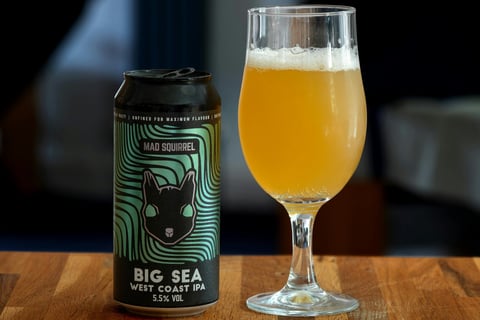



Characteristics
West Coast IPAs are known for their bold hop aroma, high bitterness, and distinctive citrus and piney notes. These beers are typically clear and crisp, with a clean fermentation profile that allows the hop flavors to take center stage . The style originated in the 1970s and 1980s, with Fritz Maytag's Liberty Ale from Anchor Brewing Company in 1975 often credited as the first West Coast IPA .
Key characteristics of West Coast IPAs include:
A hop-forward balance with minimal malt character
Crystal clear appearance
Medium gold to light reddish-amber color
Citrus, tropical fruit, floral notes, and pine in flavor and aroma
Medium body with a dry finish
West Coast IPAs are brewed with a simple grist, usually consisting of 90% 2-row pale malt and 10% crystal malts. The mash temperature is kept in the low 150s °F (65-66 °C) to achieve a balance between fermentability and malt support .
West Coast IPA Hop Profile
The hop profile is crucial to the West Coast IPA style. These beers are aggressively hopped, showcasing a variety of hop flavors and aromas. Some popular hops used in West Coast IPAs include:
Cascade: Known for its ruby red grapefruit profile and floral notes
Centennial: Offers layers of grapefruit, lemongrass, and pine needles
Chinook: Provides big, smooth bitterness with notes of pine, resin, and grapefruit
CTZ (Columbus, Tomahawk, Zeus): Brings intense citrus and spice flavors with pine notes when dry-hopped
Newer hop varieties like Strata and Triumph are also making their way into West Coast IPAs, adding fruit-forward and dank characteristics .
To achieve the signature hop profile, brewers use layered hop additions throughout the brewing process. This typically includes a 60-minute addition for bittering, followed by late additions at 5 minutes or less before the end of the boil. Some brewers also incorporate whirlpool additions and dry-hopping techniques .
Top West Coast IPA Breweries
Several breweries have made a name for themselves with their exceptional West Coast IPAs:
North Park Beer Company: This San Diego brewery, founded by Kelsey McNair, took the Brewery of the Year award at the 2022 Great American Beer Festival. Their Hop-Fu! IPA is considered one of the most award-winning homebrew recipes in history .
Firestone Walker Brewing Company: Known for their Union Jack IPA, which showcases pineapple, citrus, and piney aromas with dry hop flavors of grapefruit and tangerine. They also produce Hopnosis, a more innovative West Coast IPA brewed with Cryo Hops® .
Sierra Nevada Brewing Company: Founded by Ken Grossman, Sierra Nevada's Pale Ale, first brewed in 1980 with whole-cone American-grown Cascade hops, helped popularize the hop-forward style that would evolve into the West Coast IPA .
These breweries continue to push the boundaries of the West Coast IPA style, experimenting with new hop varieties and brewing techniques while maintaining the core characteristics that define this iconic beer style.
Hazy IPA
Hazy IPAs, also known as New England-style IPAs (NEIPAs), have taken the craft beer world by storm in recent years. This subcategory of India Pale Ale has rapidly gained a dedicated fanbase, becoming a dominant force in the U.S. craft beer scene . In fact, at the 2024 U.S. Open Beer Championship, the Hazy IPA category saw more entries than any other beer style .
Hazy IPA Appearance
As the name suggests, Hazy IPAs are characterized by their cloudy, opaque appearance. Unlike traditional clear beers, these IPAs have a distinctive foggy look that hints at their fullness of flavor . The haze is intentional and plays a crucial role in the overall taste and mouthfeel of the beer .
The unique appearance of Hazy IPAs is primarily due to two factors:
Grain composition: These beers are often brewed with grains that have a higher protein content, such as oats and wheat. In some Hazy IPA recipes, more than half of the beer's total composition can be made up of these grains .
Hopping techniques: The timing and temperature at which hops are introduced during brewing contribute to the haze. The naturally occurring oils in hops bind with the proteins from the grains, creating the signature cloudy appearance .
Hazy IPA Flavor Notes
Hazy IPAs are beloved for their intense fruit flavors and aromas, coupled with a soft body and smooth mouthfeel . These beers offer a less aggressive hop bitterness compared to traditional IPAs, focusing instead on a "juicy" character .
Key flavor notes in Hazy IPAs include:
Citrus and tropical fruit aromas
Juicy flavors reminiscent of ripe citrus
Notes of orange and pineapple (in some varieties like Sierra Nevada's Hazy Little Thing)
Lower perceived bitterness than other IPAs
The unique flavor profile of Hazy IPAs is achieved through specific brewing techniques:
Emphasis on late hopping and dry hopping with hops that have tropical fruit qualities
Use of "cold side" hops (added during fermentation) to enhance aroma and flavor without extra bitterness
Biotransformation process, which involves adding hops when fermentation is at its peak, unlocking aromatic compounds
Popular Hazy IPA Examples
Several breweries have gained recognition for their exceptional Hazy IPAs:
Chasing Broncos IPA by Save The World Brewery (Texas): Gold medal winner at the 2024 U.S. Open Beer Championship, described as an "experimental juicy IPA exploring the world of tropical hops" .
Julius by Tree House Brewing (Massachusetts): Known for its orange juice color and overwhelming citrus aroma. It offers flavors of heavy fruit juice, grapefruit peel, and tangerine .
Hazy Little Thing by Sierra Nevada: One of Sierra Nevada's most popular products, this 6.7% ABV beer is widely available and crafted with a mix of new school hop varieties like Citra, Mosaic, and El Dorado, along with traditional hops like Comet and Magnum .
Juicy Bits by Weldwerks Brewing (Colorado): A sought-after Hazy IPA with broad distribution across the United States, even reaching the competitive New England market .
These examples showcase the diversity and popularity of the Hazy IPA style, demonstrating why it has become a favorite among craft beer enthusiasts.
American Pale Ale
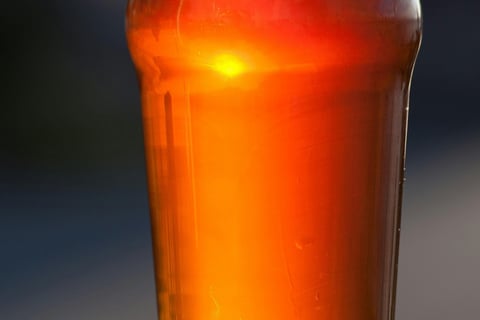

American Pale Ale (APA) is a popular beer style that originated as an adaptation of the English pale ale. This brew strikes a balance between the refreshing qualities of a lager and the robust flavors of an ale, making it a favorite among craft beer enthusiasts . APAs are characterized by their bright hop character, balanced malt backbone, and versatility.
American Pale Ale vs IPA
While American Pale Ales and India Pale Ales (IPAs) share some similarities, there are notable differences between the two styles:
Hop intensity: APAs have a lower hop intensity compared to IPAs, which are known for their stronger hop presence .
Alcohol content: APAs typically have a lower alcohol by volume (ABV) percentage, ranging from 4-6%, while IPAs tend to have a higher ABV .
Bitterness: APAs offer a more balanced bitterness, whereas IPAs generally have a harsher hop flavor .
Malt profile: APAs often have a more pronounced malt character, with bread notes and a sweet finish, compared to the hop-forward profile of IPAs .
American Pale Ale Taste
The taste profile of American Pale Ales is distinct and appealing:
Hop character: APAs showcase a range of hop flavors, including citrus, floral, pine, resinous, spicy, tropical fruit, stone fruit, berry, or melon notes .
Malt balance: A clean, grainy-malt character supports the hop presentation, often with hints of specialty malt flavors like bready, toasty, or biscuity notes .
Bitterness: Moderate to high hop bitterness is present, but it's balanced by the malt presence .
Finish: APAs typically have a medium to dry finish, with hop flavor and bitterness often lingering .
Appearance: These beers range from pale golden to light amber in color, with a moderately large white to off-white head .
Noteworthy American Pale Ales
Several American Pale Ales have gained recognition for their exceptional quality and flavor profiles:
Sierra Nevada Pale Ale: Often credited with setting the standard for the style, this beer offers a bold hop aroma and flavor balanced by a sturdy malt backbone .
Three Floyds Alpha King: Known for its unapologetically hoppy character, Alpha King features a rich malt body supporting notes of pine, citrus, and caramel .
Deschutes Mirror Pond Pale Ale: A showcase of Cascade hops, this beer offers a floral and citrusy aroma with a perfectly balanced malt sweetness .
Oskar Blues Dale's Pale Ale: This robust yet smooth brew combines assertive hop bitterness with a caramel malt backbone .
Lagunitas Pale Ale: Offering a complex blend of hop flavors ranging from tropical fruit to earthy pine, this pale ale has a dry finish and moderate bitterness .
These examples demonstrate the diversity and popularity of the American Pale Ale style, showcasing why it has become a staple in the craft beer world. As the style continues to evolve, breweries across the country are experimenting with local ingredients and pushing the boundaries of flavor profiles, ensuring that the American Pale Ale remains a dynamic and exciting beer category .
Porter
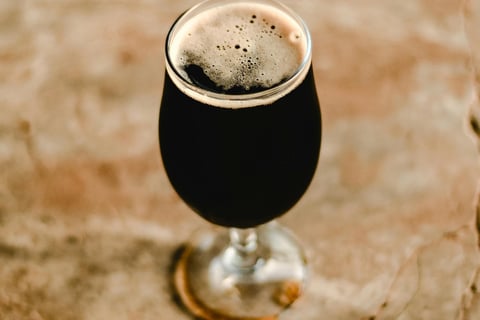

Origins
Porter, a dark beer style, originated in England during the early 18th century. It emerged as a response to the increasing pressure on brown beer brewers in London due to rising taxes and raw material costs. To keep their beer affordable, brewers lowered the strength and added more hops, resulting in a full-tasting, invigorating, smooth, and creamy dark beer that quickly gained popularity among London's working classes .
The name "porter" is said to come from the transportation workers of Central London who favored this beer . The style's creation is often attributed to Ralph Harwood, a brewer at the Bell Brewhouse in Shoreditch, with the first delivery of porter claimed to be to The Blue Last pub in the same area .
Early London porters were strong beers by modern standards. In the 1770s, trials with the hydrometer recorded porter as having an original gravity (OG) of 1.071 and 6.6% alcohol by volume (ABV) . However, increased taxation during the Napoleonic Wars pushed its gravity down to around 1.055, where it remained for the rest of the 19th century .
Porter Flavor Profile
Porters are known for their deep ruby brown to black color and dark malts that often impart chocolate and caramel flavors . These beers typically offer a well-balanced, hearty character. The flavor profile of porters includes:
Malty sweetness with notes of caramel, toffee, and sweet chocolate
Mild roasted grain flavors
Subtle coffee or licorice undertones
Low to moderate hop bitterness and flavor
Creamy mouthfeel with a medium to full body
Unlike stouts, porters generally have less pronounced burnt coffee or bitter roast flavors, as the presence of heavily roasted malted barley is often kept to a minimum . Instead, these beers are often sweeter in character, with common flavors including toffee, caramel, sweet chocolate, and nuts, all in a creamy and silky textured brew .
Different Porter Styles
Over time, several distinct porter styles have emerged, each with its own characteristics:
1. English Brown Porter
This is the lightest and most traditional style, originating in England in the early 1700s . English brown porters showcase a very dark brown color, sometimes with a red tint, and are almost opaque . They offer mild notes of roasted grains, chocolate, and toffee, with a thin but not watery mouthfeel .
2. Robust Porter
Robust porters are a more flavorful version of brown porters, with more pronounced bitterness and roasted malt flavors . They often come closest to stouts in terms of flavor profile, with the primary difference being that the roasted flavors come from malt, not the roasted barley used in stouts .
3. Baltic Porter
Baltic porters are unique in that they are lagered and cold-fermented with lager yeast . Originally brewed in England to be strong enough to withstand sailing across the North Sea, this style is now commonly brewed in Scandinavia, the Baltic States, Poland, and Russia . Baltic porters are full-bodied with a silky and creamy mouthfeel, often displaying a balance of smoke, roasted malt, and hoppy bitterness (35 to 45 IBUs) in the taste .
4. American Porter
American porters are inspired by English styles but have a distinctly American character with few style rules . They often feature a balance of flavors, with some having big hop bitterness while others are as mild as the English style . American brewers have taken the standard English-style brown porter and crafted brews with greater amounts of hop flavor and bitterness, as well as more intense malty sweetness .
Saison
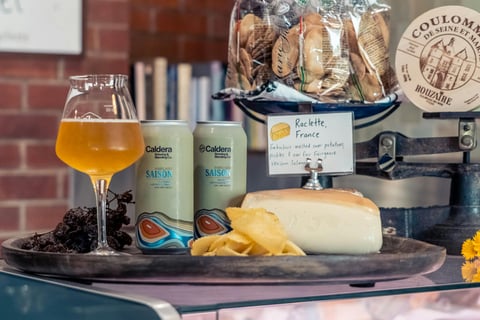

History
Saison, a beer style with rustic origins, emerged from the farmhouses of Wallonia in southern Belgium during the 18th century . Initially brewed by farmers during the cooler months, these beers were intended to provide refreshment for seasonal workers, known as "saisonniers," during the peak of summer's agricultural labor .
Traditionally, saisons were low in alcohol content, typically ranging from 3-4% ABV, ensuring workers could consume them throughout the day without significant inebriation . The name "saison," French for "season," reflects the beer's seasonal nature and its ties to the agricultural cycle .
The brewing process of saisons often involved the use of wild and mixed fermentation, including spontaneous fermentation by wild yeast and bacteria present in the farm environment . This practice imparted distinctive fruity and sometimes slightly tart characteristics to the beer, contributing to its unique flavor profile .
Saison Taste Characteristics
Saisons are renowned for their complex and multifaceted flavor profile, characterized by a harmonious interplay of fruity, spicy, and earthy nuances . Key taste characteristics include:
Dry Finish: Saisons are known for their high attenuation, resulting in little to no residual sweetness and a crisp, refreshing experience .
Spicy Character: The use of specific yeast strains often contributes phenolic notes, imparting peppery or clove-like flavors .
Fruity Esters: Subtle hints of fruitiness, often reminiscent of citrus fruits like lemon and orange, are present due to the yeast fermentation .
Earthy and Funky Notes: Some saisons may feature a subtle earthy or barnyard aroma, adding complexity to the flavor profile .
Hop Character: While not overpowering, saisons often showcase a slightly spicy, floral, and earthy fruity hop character .
The color of saisons can range from amber to deep copper, depending on the amount of roasted malt used in the brewing process . The body is typically light to medium, with high carbonation contributing to the beer's refreshing quality .
Craft Saison Innovations
As the saison style has gained popularity among craft brewers, various innovations have emerged, pushing the boundaries of this traditional beer:
Honey Saisons: Some breweries have incorporated honey into their saison recipes, as evidenced by the Missing Linck Honey Saison, which won a Bronze Medal in the Specialty Honey Beer category .
Spiced Saisons: Craft brewers have experimented with adding spices to saisons, creating unique flavor profiles. An example is the Hot Honey Saison, which earned a Bronze Medal in the Chili Pepper Beer category .
Hop-Forward Saisons: Drawing inspiration from beers like XX Bitter from De Ranke, some brewers have leaned into creating hoppier versions of saisons .
Wild Interpretations: Taking cues from lambic producers in Belgium, certain craft brewers have developed more complex, wild interpretations of the saison style .
Farmhouse Ales: While not strictly saisons, some brewers have embraced the broader category of farmhouse ales, which can include grisettes, low-ABV Belgian sours, and table beers .
These innovations demonstrate the versatility of the saison style and its ability to adapt to modern brewing techniques while maintaining its rustic charm and refreshing character.
Barleywine
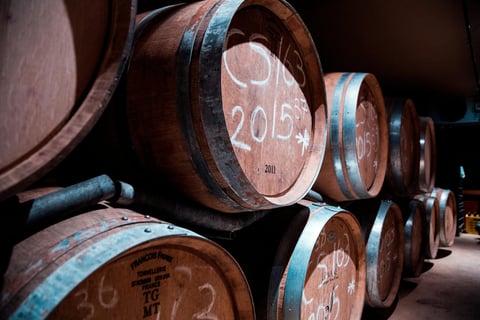

Brewcraftershub.com
Your Ultimate Destination for All Things Beer
Cheers
contact@brewcraftershub.com
© 2024. All rights reserved.
